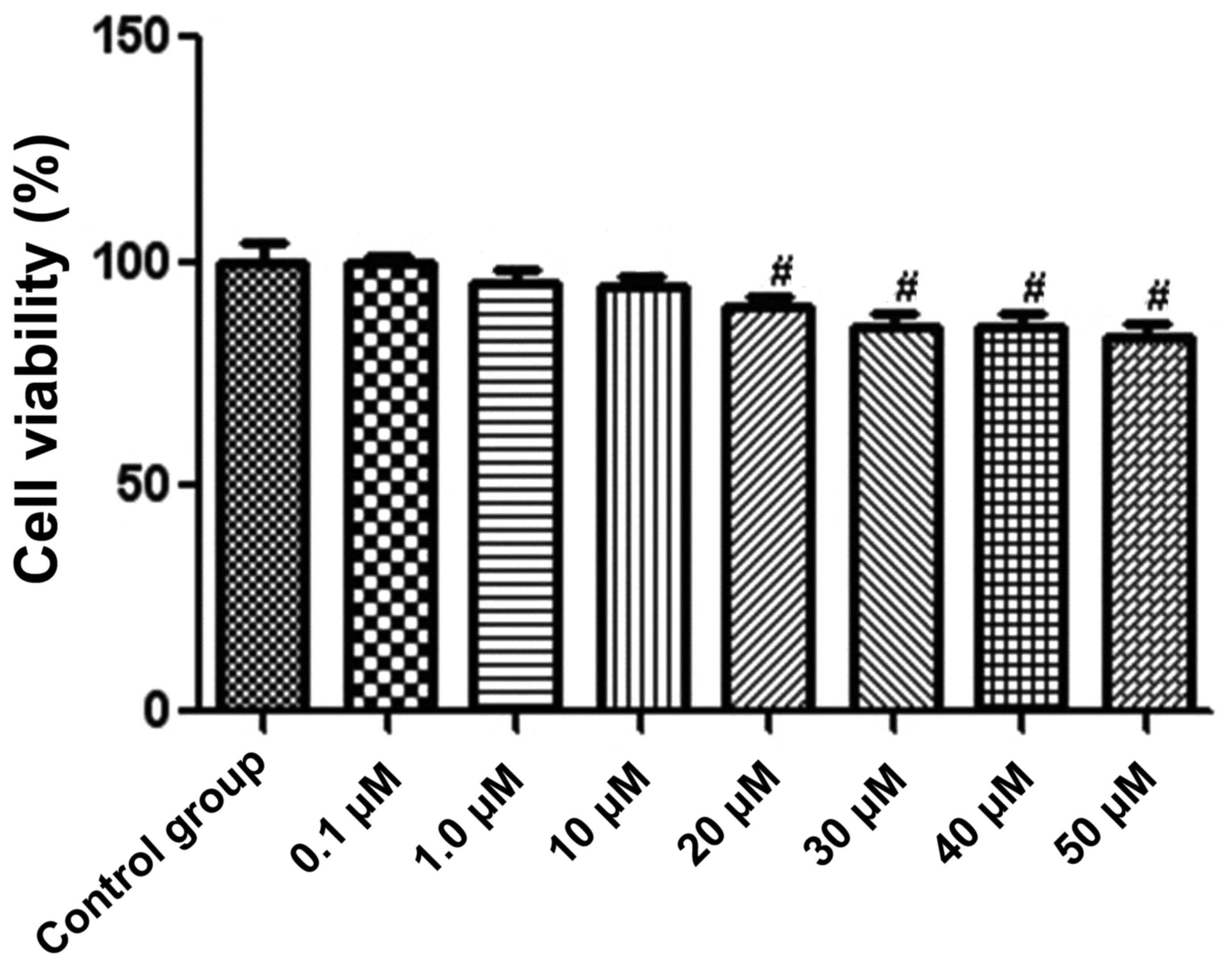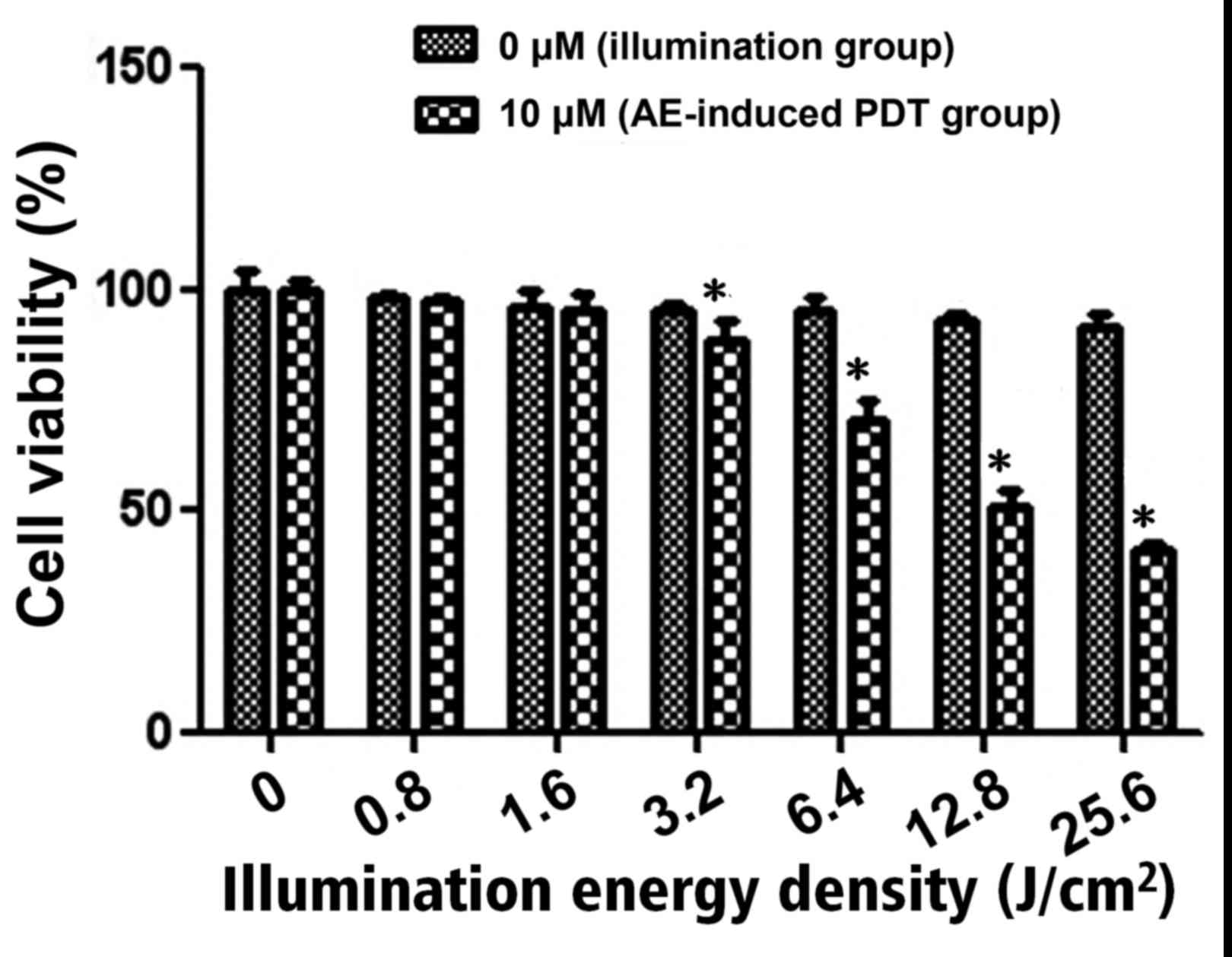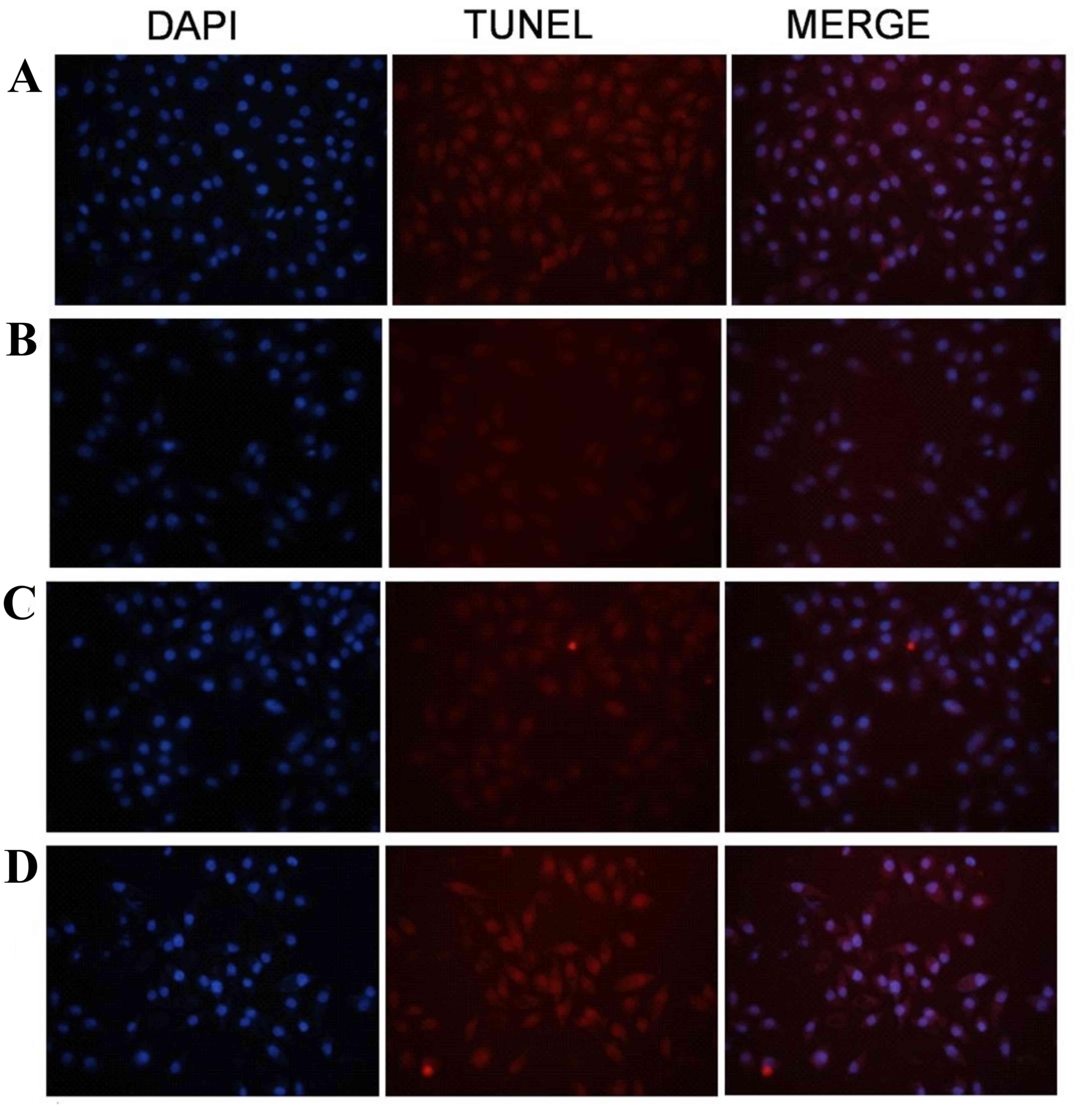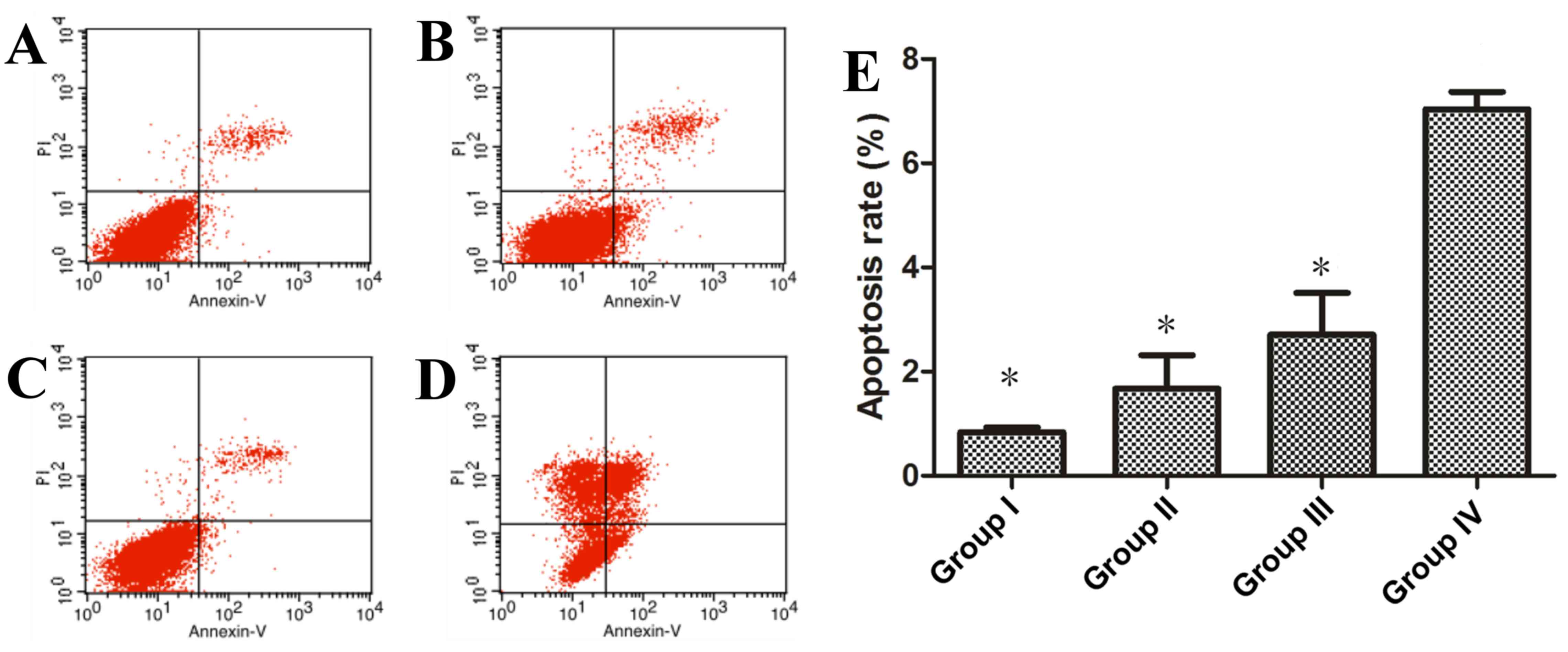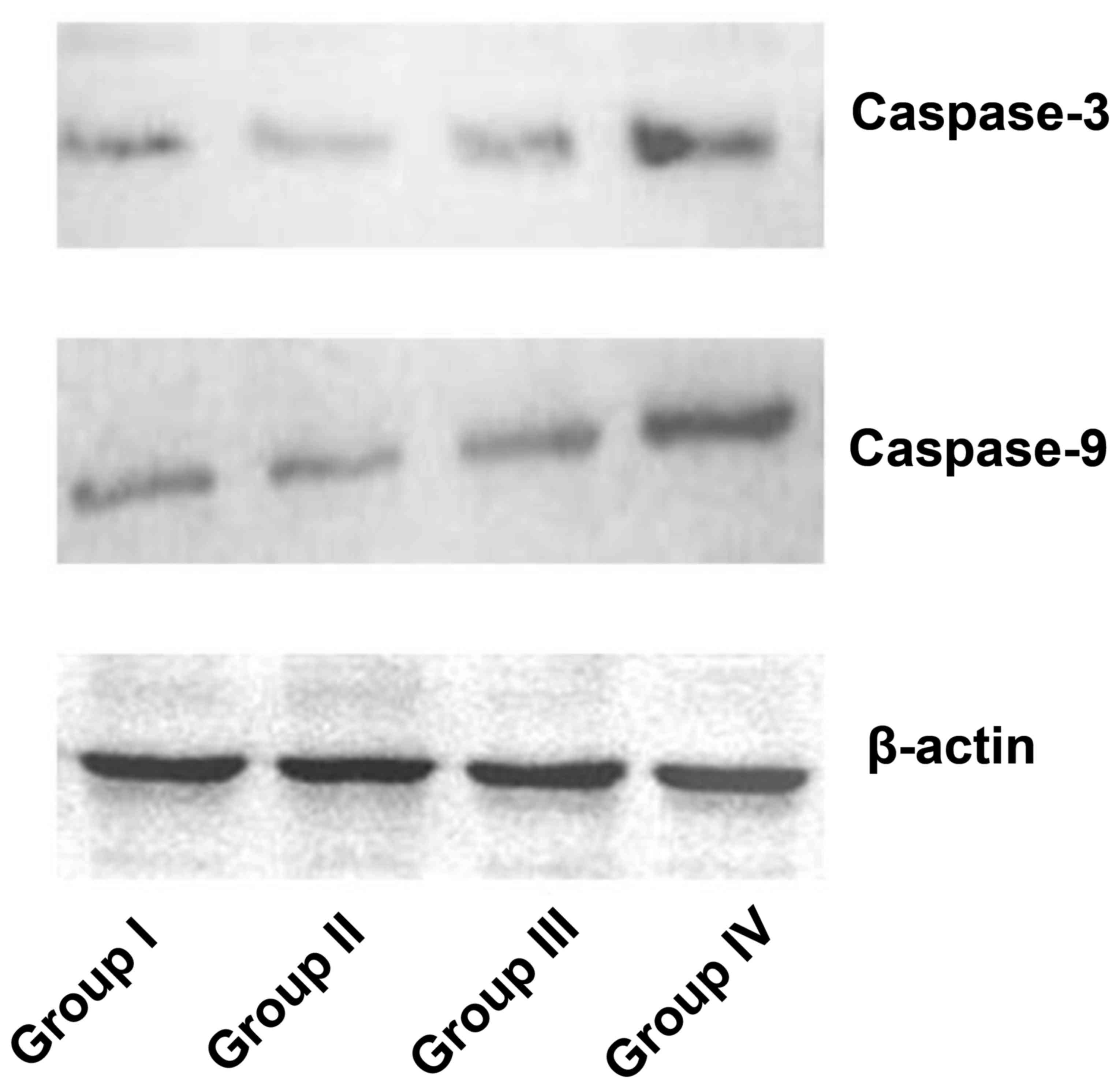|
1
|
Nowak-Stępniowska A, Wiktorska K, Małecki
M, Milczarek M, Lubelska K and Padzik-Graczyk A: Cytotoxicity of
PP(Arg)2- and PP(Ala)2(Arg)2-based photodynamic therapy and early
stage of apoptosis induction in human breast cancers in vitro. Acta
Biochim Pol. 59:603–611. 2012.PubMed/NCBI
|
|
2
|
Li JH, Chen ZQ, Huang Z, Zhan Q, Ren FB,
Liu JY, Yue W and Wang Z: In vitro study of low intensity
ultrasound combined with different doses of PDT: Effects on C6
glioma cells. Oncol Lett. 5:702–706. 2013.PubMed/NCBI
|
|
3
|
Qumseya BJ, David W and Wolfsen HC:
Photodynamic therapy for barrett's esophagus and esophageal
carcinoma. Clin Endosc. 46:30–37. 2013. View Article : Google Scholar : PubMed/NCBI
|
|
4
|
Buytaert E, Dewaele M and Agostinis P:
Molecular effectors of multiple cell death pathways initiated by
photodynamic therapy. Biochim Biophys Acta. 1776:86–107.
2007.PubMed/NCBI
|
|
5
|
Verma S, Watt GM, Mai Z and Hasan T:
Strategies for enhanced photodynamic therapy effects. Photochem
Photobiol. 83:996–1005. 2007. View Article : Google Scholar : PubMed/NCBI
|
|
6
|
Robertson CA, Evans DH and Abrahamse H:
Photodynamic therapy (PDT): A short review on cellular mechanisms
and cancer research applications for PDT. J Photochem Photobiol B.
96:1–8. 2009. View Article : Google Scholar : PubMed/NCBI
|
|
7
|
Kushibiki T, Hirasawa T, Okawa S and
Ishihara M: Responses of cancer cells induced by photodynamic
therapy. J Healthc Eng. 4:87–108. 2013. View Article : Google Scholar : PubMed/NCBI
|
|
8
|
Pecere T, Gazzola MV, Mucignat C, Parolin
C, Vecchia FD, Cavaggioni A, Basso G, Diaspro A, Salvato B, Carli M
and Palù G: Aloe-emodin is a new type of anticancer agent with
selective activity against neuroectodermal tumors. Cancer Res.
60:2800–2804. 2000.PubMed/NCBI
|
|
9
|
Chiu TH, Lai WW, Hsia TC, Yang JS, Lai TY,
Wu PP, Ma CY, Yeh CC, Ho CC, Lu HF, et al: Aloe-emodin induces cell
death through S-phase arrest and caspase-dependent pathways in
human tongue squamous cancer SCC-4 cells. Anticancer Res.
29:4503–4511. 2009.PubMed/NCBI
|
|
10
|
Lin KY and Uen YH: Aloe-emodin, an
anthraquinone, in vitro inhibits proliferation and induces
apoptosis in human colon carcinoma cells. Oncol Lett. 1:541–547.
2010.PubMed/NCBI
|
|
11
|
Zhu S, Jin J, Wang Y, Ouyang Z, Xi C, Li
J, Qiu Y, Wan J, Huang M and Huang Z: The endoplasmic reticulum
stress response is involved in apoptosis induced by aloe-emodin in
HK-2 cells. Food Chem Toxicol. 50:1149–1158. 2012. View Article : Google Scholar : PubMed/NCBI
|
|
12
|
Vath P, Wamer WG and Falvey DE:
Photochemistry and phototoxicity of aloe emodin. Photochem
Photobiol. 75:346–352. 2002. View Article : Google Scholar : PubMed/NCBI
|
|
13
|
Bai DQ, Yu LH, Xia XS, Yu HP, Jiang Q, Tan
Y, Zeng XB and Xu CS: Study on spectral properties of aloe-emodin
in different solvents. Laser J. 28:83–85. 2007.
|
|
14
|
Lee HZ, Yang WH, Hour MJ, Wu CY, Peng WH,
Bao BY, Han PH and Bau DT: Photodynamic activity of aloe-emodin
induces resensitization of lung cancer cells to anoikis. Eur J
Pharmacol. 648:50–58. 2010. View Article : Google Scholar : PubMed/NCBI
|
|
15
|
Cardenas C, Quesada AR and Medina MA:
Evaluation of the anti-angiogenic effect of aloe-emodin. Cell Mol
Life Sci. 63:3083–3089. 2006. View Article : Google Scholar : PubMed/NCBI
|
|
16
|
Juzeniene A and Moan J: The history of PDT
in Norway Part II. Recent advances in general PDT and ALA-PDT.
Photodiagnosis Photodyn Ther. 4:80–87. 2007. View Article : Google Scholar : PubMed/NCBI
|
|
17
|
MacCormack MA: Photodynamic therapy in
dermatology: An update on applications and outcomes. Semin Cutan
Med Surg. 27:52–62. 2008. View Article : Google Scholar : PubMed/NCBI
|
|
18
|
Nicholson DW: Caspase structure,
proteolytic substrates, and function during apoptotic cell death.
Cell Death Differ. 6:1028–1042. 1999. View Article : Google Scholar : PubMed/NCBI
|
|
19
|
Lam M, Oleinick NL and Nieminen AL:
Photodynamic therapy-induced apoptosis in epidermoid carcinoma
cells. Reactive oxygen species and mitochondrial inner membrane
permeabilization. J Biol Chem. 276:47379–47386. 2001. View Article : Google Scholar : PubMed/NCBI
|
|
20
|
Hilf R: Mitochondria are targets of
photodynamic therapy. J Bioenerg Biomembr. 39:85–89. 2007.
View Article : Google Scholar : PubMed/NCBI
|
|
21
|
Buggiani G, Troiano M, Rossi R and Lotti
T: Photodynamic therapy: Off-label and alternative use in
dermatological practice. Photodiagnosis Photodyn Ther. 5:134–138.
2008. View Article : Google Scholar : PubMed/NCBI
|
|
22
|
Li KT, Duan QQ, Chen Q, He JW, Tian S, Lin
HD, Gao Q and Bai DQ: The effect of aloe emodin-encapsulated
nanoliposome-mediated r-caspase-3 gene transfection and
photodynamic therapy on human gastric cancer cells. Cancer Med.
5:361–369. 2015. View
Article : Google Scholar : PubMed/NCBI
|















